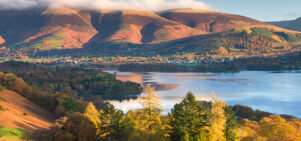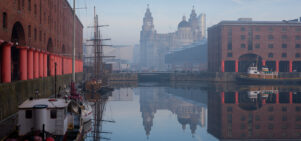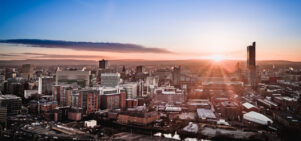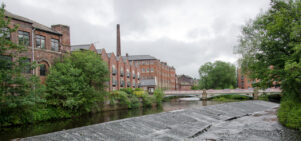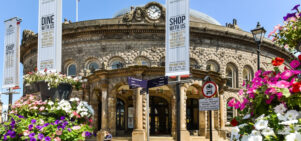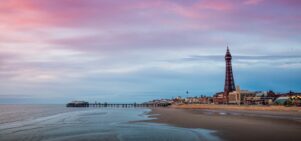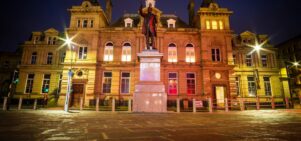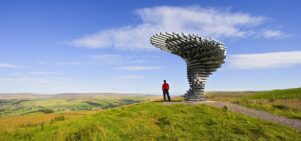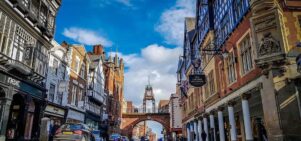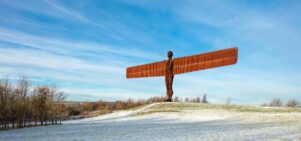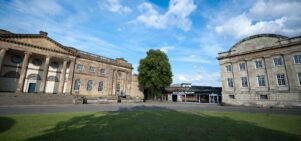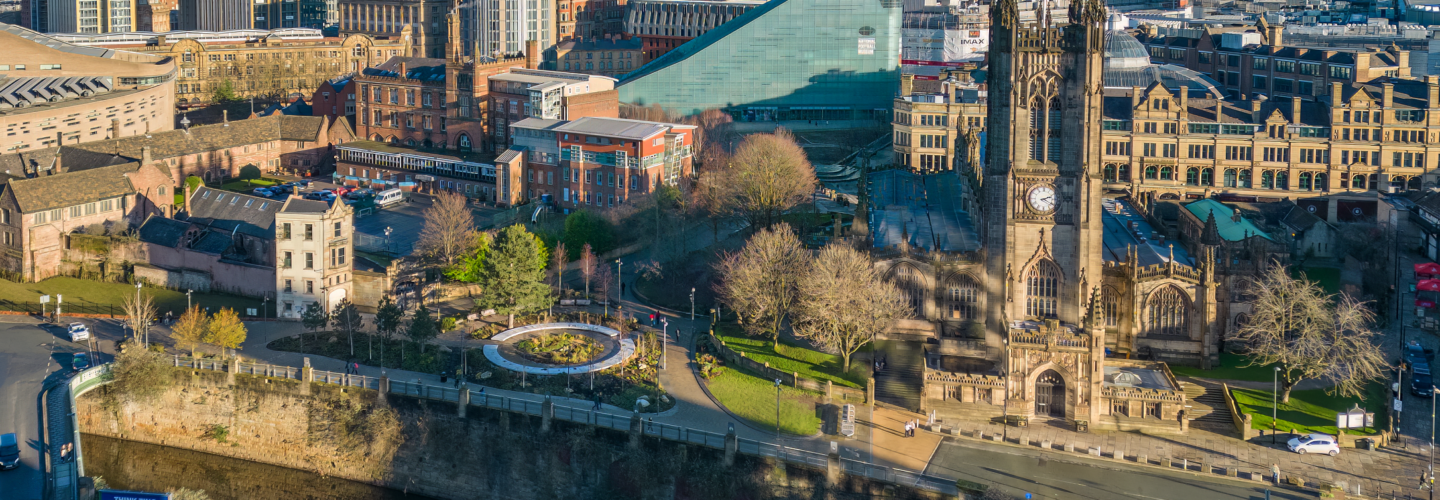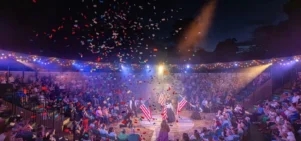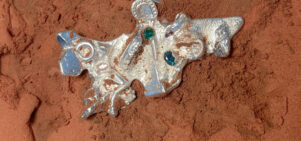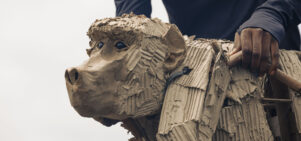Wakefield: Our guide to the outdoor art & architecture of a northern city
Creative TouristWe’ll come right out and say it: until the opening of The Hepworth, Wakefield wasn’t really on our radar. Sure, we’d been over to Yorkshire Sculpture Park nearby, but Wakefield itself? Not so much. That all changed when the city’s David Chipperfield-designed gallery and homage to its namesake sculptor opened in May 2011; in recent years we’ve found ourselves in the city famed for its rhubarb more times than we can count – and, in its honour, decided to put together a guide should you fancy a jaunt out West Riding-way yourself.
The Hepworth remains, of course, the main reason to visit, its historic and contemporary exhibitions worthy of international attention. But it is not some cultural interloper, loved by tourists and loathed by locals. Its sterling family programmes, outdoor adventure playground, workshops (metal sculpture making, anyone?), artist talks and events make it a winner with Wakefordians; it is locals that, after all, make up a fair chunk of its record-breaking visitor numbers. Add a small but solid gallery shop, plus a restaurant whose cream teas deserve the epithet “majestic”, and The Hepworth has enough to keep visitors far and near entertained for the best part of the day.
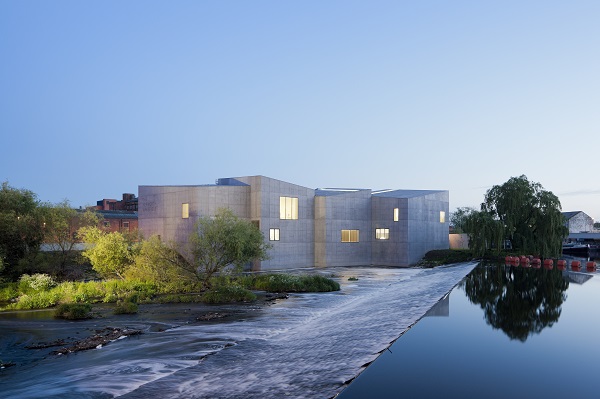
But it is worth striking out. The Hepworth sits just outside the city centre, surrounded by noisy roads and most closely served by the rather grim Kirkgate Station – yet across the river lies the medieval Chantry Chapel of St. Mary, a Grade I-listed building and one of only three surviving “bridge chantries” in the UK. Its diminutive size sets it at odds with the great, grey hulk of a gallery opposite; if it’s open, brave the roads to take a look inside (open for occasional services and open days; check ahead).
If you’re in the car and you’re into your art, the next logical stop-off is Yorkshire Sculpture Park; set in 500 acres of rolling parkland at West Bretton, a 20-minute drive away, it is arguably the country’s best such park, whose 60 outdoor works (by artists including Elisabeth Frink, Henry Moore, Sol LeWitt and Andy Goldsworthy) are supplemented by regular new commissions, temporary installations and, of course, YSP’s five indoor gallery spaces. The café and restaurant are good (but can be heaving on sunny days and holidays), while the design-led shop is worth opening your wallet for; expect a solid range of art and design books, cards, homewares, jewellery and one-off artist commissions.
Closer to The Hepworth, a ten-minute drive to the east, is Nostell Priory, an 18th century house with glorious Robert Adam interiors. Set in 300 acres of parkland and complete with adventure playground and picturesque lake, it’s owned by the National Trust. Take a detour along the way to Heath Common, home to the pretty Heath Tea Rooms and Kings Arms Pub, the latter owned and operated by the award-winning Ossett Brewery (in a neat twist, the brewery created a bespoke beer for The Hepworth’s launch back in 2011).
Wakefield built its fortunes on textiles and has the architecture to prove it
But this is a guide to a day out in Wakefield, and though you could easily spend a day tinkering about on its edges we would be remiss not to mention the city itself. Wakefield, like so many northern towns around these parts, built its fortunes on textiles and has the architecture, those buildings whose grand embellishments speak of civic pride and fortunes made via cloth, to prove it. Starting at Wakefield Westgate Station, heading past the beautiful 18th-century Westgate Chapel (open for Sunday services only), a clutch of buildings remind passersby of this past; Pemberton House, adjacent to the chapel, once belonged to Pemberton Milnes, “cloth merchant and magistrate”. Opposite, at 97-99 Westgate, a solid Georgian terrace is livened up via the carved stone heads and a single ram that sit above every door and window arch. Closer to the station, the Grade II-listed Orangery runs small, community-led exhibitions. Built for Pemberton Milnes himself, it’s open weekdays only but hopes to run events in its sweet, ivy-clad and gravestone-peppered garden during the summer.
Westgate leads into the city centre; follow it up past the Theatre Royal (a building that also houses the tiny Time Bakery, an unprepossessing café serving bread baked on the premises) and head towards the newly renovated Wakefield Cathedral. Some parts of this light, airy and all-round lovely place of worship date back to medieval times while others – such as a floor whose stone was quarried at Holmfirth – are sympathetically new. The cathedral is open seven days a week, hosts regular music recitals, has an on-site café (with “good cake”, according to Joy, the volunteer we spoke to) and has a small play area for tots. Outside, you might find the Wakefield Chestnut Man, a talkative soul who stands on the square selling chestnuts roasted over a coal and wood fire between October and Easter. He knows his stuff; he should – he’s been doing it since the 1960s.
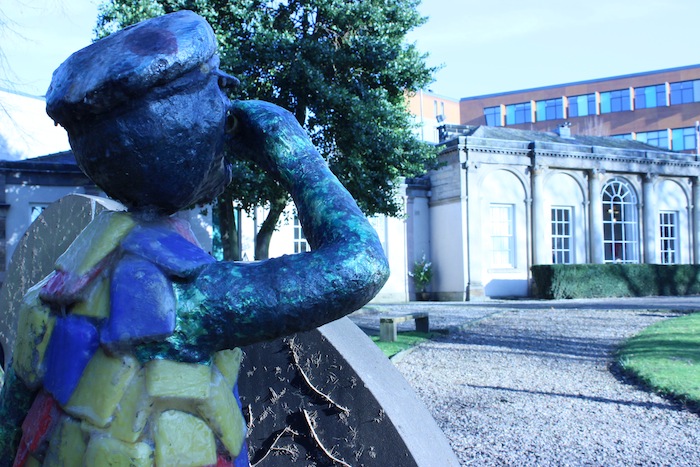
The rest of Wakefield is a mish-mash of old and new, and has both the up and downsides typical of British towns and cities. So while the newish Trinity Walk Shopping Centre peddles the same mix of shops as every other high street, a curious Elizabethan building at one end, on Brook Street, harks back to the 16th century. It was restored in 1981 and is apparently an exhibition hall, though we could find no sign of shows when we visited. Proper old man’s boozer, the Black Rock Pub (Cross Street) is a tiny squeeze of a place, CAMRA-rated, Victorian tiled and with changing guest ales on tap; it was serving Sheffield’s Kelham Island on our visit. Nearby, Deli Central (Bull Ring) is a family-run deli and is a good bet for sandwiches, salads and excellent coffee, restaurant Iris serves modern British food (Bull Ring; evenings only), while the literally brilliant Neon Workshops (George Street) runs neon-making courses and occasional exhibitions (check ahead for details). The latter is part of the bi-monthly Artwalk, an early evening self-guided walk that takes in many of Wakefield’s arts and other institutions.
Where Wakefield sets itself apart is in its civic architecture. Wood Street, for example, leads both to a secret square – Crown Court, surrounded by Georgian villas, one of which is the former Town Hall – and to the epic 19th-century Town Hall and County Hall. Though both are working buildings, visitors can take a limited peek inside. Crown Court, though, is ranged around a small, pedestrianized square; set into its recently installed paving is an inscription by the Wakefield-born author, George Gissing: “There is no such thing as bad weather; every sky has its beauty.” Maybe there’s another area Wakefield excels, then: in its quiet confidence and wry humour.
